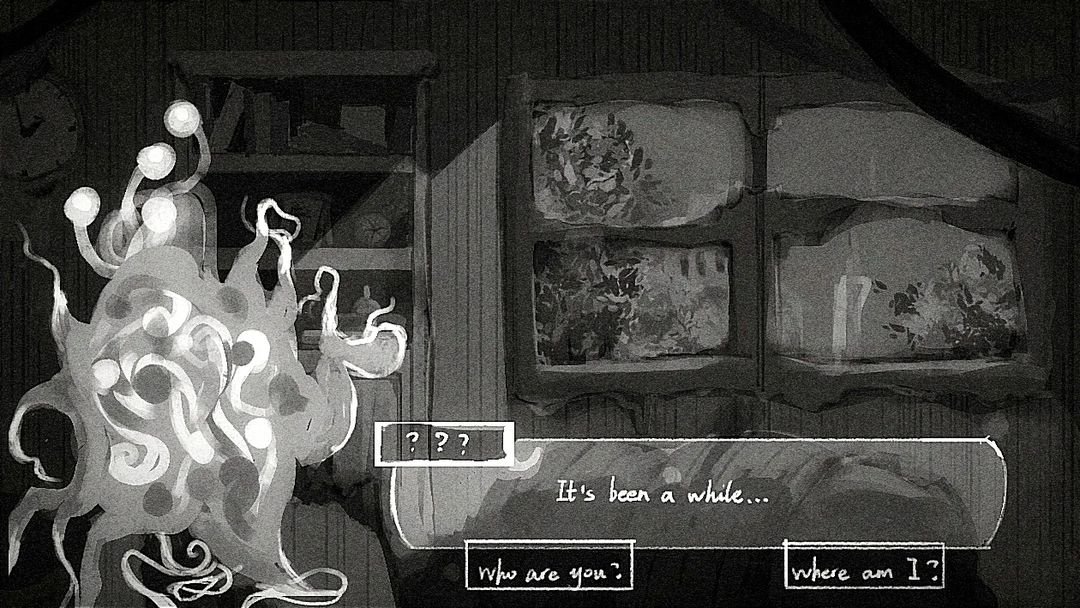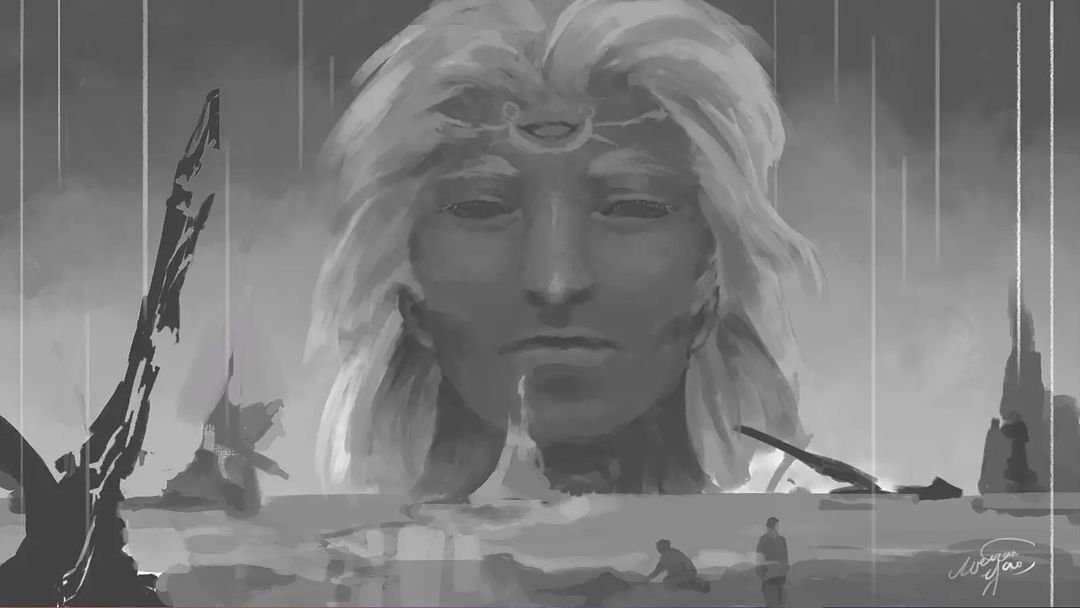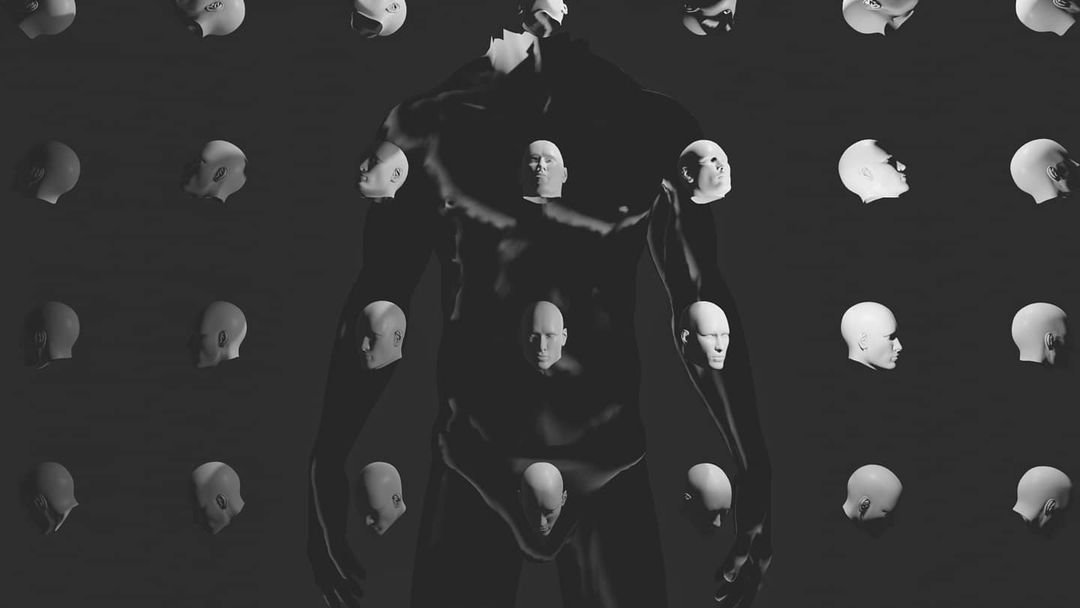Artist in conversation: Weiran Yao
Weiran Yao (Eiro Yao) is a new media artist based in London, originally from China.
Their works cover a wide range of forms, varying from digital painting, VFX, 3D animation, short films, and mixed reality to video games and music production.
Storytelling and audience immersion play important roles in their creations. They have cultivated interests mainly on the political nature issues related to identity recognition and construction, crisis of de-subjectivity under the development of technological media, symbiosis between human and nature, as well as inter-human intimacy and surveillance.
With curiosity, creativity, empathy and attitude, they have developed systemic capacity to express their ideas and put inspirations into practice via trans-media methods.
Website | Instagram | LinkedIn
What initially inspired you to become an artist, and how did you develop your unique style?
I grew up in an environment where teenagers face immense educational pressure, emphasizing societal standards for individual qualifications. I had studied in the field of science and engineering, and in order to get into better schools, I was sent to extracurricular education programs like the FLL and VEX robotics clubs. However, I found myself always taking on the creative aspect in the team, which made me realize my passion lay in a career path that wasn't initially suited for me. Therefore after my undergraduate studies, I started participating in art-related activities. For me, this was a process of transitioning from accepting external standards to establishing my own standards and creating content for external consumption. It ignited a great deal of inner strength within me and led me to decide on pursuing an educational and professional path in art and creativity.
To me, as an artist, it is important to convince oneself first before convincing the audience. Establishing an artistic style is also a process of constructing a system of values. In the graphic art aspect of my work, I have drawn inspiration from both expressionism and pop art styles, tending to use colour and flowing shapes to build visual tension. However, I also enjoy exploring possibilities that transcend the boundaries of art, technology, and nature through interdisciplinary art projects. I often seek inspiration from fields such as game art and sculpture. Additionally, apart from my home country and the UK, I have lived in places like Northern Europe and Japan. Certain personal experiences have made me realize that many things in life are not artworks themselves, but they can still be filled with artistic sensibility. I believe that, to some extent, art is the unique translation and documentation of objective existence and events by humanity, after establishing their own civilization and emotional cognition. Therefore, narrative is a very important part of my artistic style.
In terms of subject matter, what themes or motifs do you frequently explore in your work, and what draws you to these topics?
My works cover a wide range of platforms, varying from digital painting, VFX, 3D animation, short films, and mixed reality to video games and music production. The transmedia creative practice has allowed me to explore diverse themes and discover more possibilities. So far, the themes that have captured my attention primarily include the political nature of issues related to identity recognition and construction, the crisis of de- subjectivity in the face of technological media development, the symbiotic relationship between humans and nature, as well as interpersonal intimacy and surveillance. For me, it is important whether a theme itself holds critical potential and its relevance to both individual microcosm and macrocosm of social development (such as technology and identity politics). Personally, I tend to employ thematic narratives in my art that have practical significance and humanistic value.
Can you discuss a specific piece or project that challenged you as an artist, and how you overcome those challenges?
In 2022, I worked on a video game project called "Concave Lens," which was quite a challenging experience for me. The project revolved around the historical silencing of the transgender community, making it a morally sensitive and controversial theme. To ensure the appropriateness of the narrative approach, I sought assistance from relevant social organizations and conducted field research targeting the intended audience. Additionally, compared to other non-installation art forms, the game project required a more comprehensive range of creative skills, including painting, modeling, music production, and programming within the game engine. The larger scope of tasks necessitated stronger time management and task scheduling abilities.
How do you stay connected with other artists and keep up with new developments and trends in the art world?
The fact that I pursued my postgraduate studies in an art school in London itself has been helpful in establishing a social circle within the industry. After graduating, I have had many opportunities to meet fellow practitioners through participating in exhibitions, festivals, and online artist communities.
Regarding trends, I have always believed that keeping up with the latest developments in the art world cannot be separated from staying informed about trends in other social aspects and industries. This is especially true for artists who focus on social issues and utilize digital platforms as their primary medium. It is crucial to stay updated on the latest developments in fields such as biology, technology, and politics, as it can inspire the goals of new projects. Artists also need to remain sensitive and actively embrace emerging technologies and creative tools, such as artificial intelligence. Additionally, the most important aspect is to maintain a sense of responsibility and practical skills in one's own artistic practice, whether it is for abstract self-expression or addressing concrete social issues.
How do you incorporate feedback from critics and audiences into your artistic practice, and how do you balance this feedback with your own artistic intuition?
It depends on the nature and different aspects of the projects I undertake. For example, when working on commercial projects, it could happen that sometimes the feedback from clients and target audience needs to be taken into consideration more than my personal creative preferences. However, it's a different story when it comes to my personal artistic practice.
I pay close attention to critical feedback regarding storytelling techniques and ethical sensitivity in my work. This feedback helps me articulate themes in a more mature, structured, and identity-conscious manner. In terms of style and aesthetics, feedback primarily assists me in understanding which styles might appeal to particular communities or audience patterns. Sometimes, I receive feedback comparing my work to other well-established artists with similar styles. In such cases, I take the opportunity to explore the works of these artists, examining how they organize visual language and handle details more maturely within similar concepts. This exploration allows me to discover different perspectives and sources of inspiration, providing me with valuable insights.
While it is important for artists to uphold their aesthetic and style independently of market or audience demands, maintaining an open mind and a willingness to learn is crucial.
How do you stay motivated and inspired despite any setbacks or creative blocks you may encounter?
When I encounter significant obstacles, I choose to slow down and engage in activities such as reading and meditation to help clear my mind and temporarily pause most social engagements. I don't allow anything to occupy my thoughts, and if any inspiration or ideas arise, I write them down to release them from my mind. In a way, the creative process for an artist also requires willpower, which needs to be consciously maintained and replenished. You can think of it as energy—protecting one's energy is crucial. Through this pause, I reset my mental state, emotions, and thought processes, breaking free from any limitations imposed by established patterns.
However, in situations where time is limited, or when tasks must be completed, I become my own manager. I clearly outline the tasks related to the creative process and prioritize them. I conduct extensive research and examine similar works for inspiration within a short period. I ensure that once inspiration strikes, I immediately put it into practice, rather than waiting for an extended period of brainstorming before taking action.
Can you tell us about the role that mental health plays in your creative process and how it influences the themes and subject matter of your art?
It's interesting that I have personally struggled with mental health issues, but sometimes it actually helps with my creativity. When my mental state is poor, I enter a state of detachment and apathy. However, this sense of detachment and apathy provides me with a completely different perspective on life and human activities. In this state, I lack motivation to take action, but I do record these thoughts. When my mental state stabilizes and I immerse myself in my work, these recorded thoughts become valuable creative material.
For example, earlier this year, I created a sketch series called "Bad Festivals." The inspiration came from observing how during the festive moments of Christmas and New Year, many people who have experienced negative events or mental issues feel even more pain in contrast to the joyful atmosphere around them. However, they suppress their negative feelings because they don't want to spoil the celebration for others. But it should be acceptable to feel isolated and unhappy during festivals. I initially created this series because I was in that state myself, but I also had friends who were going through painful experiences before the holidays, such as the loss of a loved one or the end of a relationship. This made me realize that this situation was not an isolated incident, which motivated me to complete this series.
How do you hope your art sheds light on mental health issues and contributes to the larger conversation around mental health awareness and advocacy?
Maintaining mental health is crucial, and people should actively take measures to seek help and improve their well-being. However, I don't believe that toxic positivity is healthy or worthy of encouragement. We all experience periods of sadness and negativity, and sometimes they can develop into mental illnesses. When incorporated into artistic creation, the first step of healing, within my creative framework, is to accept the ugly and dark aspects and not shy away from showcasing and discussing them, rather than masking their existence with concepts of love and beauty, although the latter is also important. So, as mentioned earlier, in my personal creative process, I tend to open a window to help these less desirable aspects be seen and accepted, while maintaining ethical sensitivity and avoiding triggers.
Furthermore, I am also willing to actively participate in projects that genuinely contribute to the mental well-being of the audience. For example, in 2019, while living in Finland, I designed a video game product for a local mental health service company. Clients could play this product and, through this artistic medium, help psychologists collect preliminary data.
Additionally, mental health exists not only as the sole theme in artworks but also in art pieces related to social crises and identity politics. For artists, it is essential to approach these topics with reverence and a rigorous attitude while considering the audience's well- being.
How do you feel about exhibiting your artworks with The Holy Art Gallery?
This has been one of the most enjoyable exhibition experiences I've had so far. The Holy Art Gallery provides an open and safe space, not only for artists to showcase their work to a wider audience of collectors and art enthusiasts but also as a platform for us to learn from and connect with each other. The curators and gallery staff have been extremely friendly and helpful as well.
Looking ahead, what are your long-term goals and aspirations as an artist, and how do you plan to achieve them?
I hope to conduct as many experiments as possible in the next 5-10 years, daring to make mistakes and in the process develop my own methodology and algorithms, rather than merely forming a particular style. I am not looking for settling down and aspire to one day transcend the title of an artist, becoming a multidisciplinary creator who produces influential content and contributes positively to societal development.






